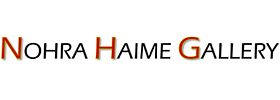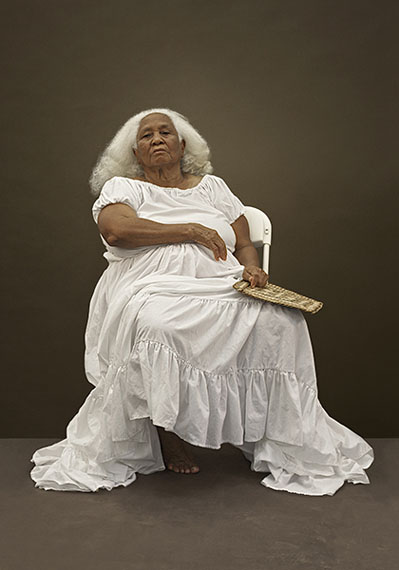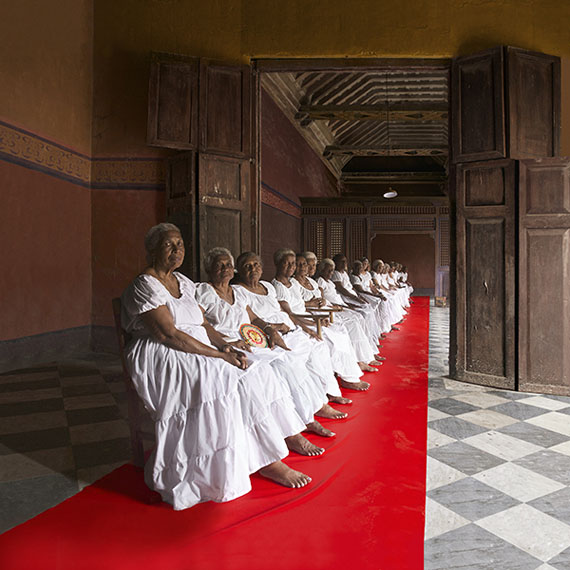
Ruby Rumié »
Weaving Streets
Exhibition: 16 Nov 2017 – 6 Jan 2018
Wed 15 Nov 18:00 - 20:00

Nohra Haime Gallery
500 West 21st Street
NY 10011 New York
+1-212-8883550
gallery@nohrahaimegallery.com
www.nohrahaimegallery.com
Tue-Sat 10-18

inkjet print on satin paper, laminated in luster matte, 33.07 x 23.07 in. 84 x 58.6 cm.
RUBY RUMIÉ
"WEAVING STREETS"
November 16, 2017 – January 6, 2018
Opening Reception for the artist: Wednesday, November 15th from 6 to 8 p.m.
This major exhibition will include a series of photographs, a video, a poster, and five volumes on Cartagena’s ambulant street vendors.
This new body of work was born from a chance encounter between the artist, Ruby Rumié, and Dominga Torres Tehran, a woman who for more than 45 years has walked the city streets selling fish. Dominga caught the attention of the artist for her unique and natural beauty. For nearly half a century this woman worked unnoticed, but at that moment, she completely captivated Rumié.
Weaving Streets is an attempt to rescue women like Dominga from oblivion and invisibility - women who have spent valuable years of their lives as ambulant street vendors, permanently wandering the neighborhoods of the city. Aptly named, "Weaving Streets" references the phrase used by grandmothers to describe those who walked the city streets often.
Rumié’s goal is to present new views on the vendors and their environment. The viewer’s encounter with these women will be different for the exhibition – it will be special. Viewers will see for the first time what has always been there, like running a thin veil between the visible and the invisible, a veil of old and constant stereotypes that keep us numb, or blind, so we ignore the marvelous and different realities.
"Problems such as gender violence, gentrification, social barriers and discrimination constitute a constant concern which I attempt to uncover through my work, by means of large installations where I use repetition as a platform for protest; bodies as objects of mass consumption that reveal the disappearance of our intangible heritage, and photographs to suggest the enigma of social stratification, all of these intend to stimulate reflection, playfulness, visual pleasure, emotion and inquiry" explains Rumié.

inkjet print on satin paper, laminated in luster matte, 39 3/8 x 27 9/16 in. 100 x 70 cm.
Rumié condenses the collected material into a Corpus, a historical archival manner, comprised of five volumes that unfold spatially in the gallery. Photo albums picturing each participant, stamp albums paying tribute to them, and a video of a ceremony held in their honor will frame the gallery space so that the images collectively transform into a fight against death and oblivion, thus becoming a legacy and memory to be heard by generations to come.
Born in Cartagena de Indias, Ruby Rumié studied in the School of Fine Arts of Cartagena de Indias. She has held major exhibitions in Colombia: Bogotá, Barranquilla, Cartagena; Santiago de Chile; Miami; New York; Washington D.C.; Rouen; Paris. Rumié participated in the international section of the First Biennial of Contemporary Art, Cartagena de Indias, and was recently granted a scholarship by the Rockefeller Foundation Bellagio Center, where she completed the last stage of the Weaving Streets project, during a residency of four weeks. She currently lives and works in Cartagena, Colombia.

inkjet print on satin paper, laminated in luster matte, 51 3/16x 51 3/16 in. 130 x 130 cm.